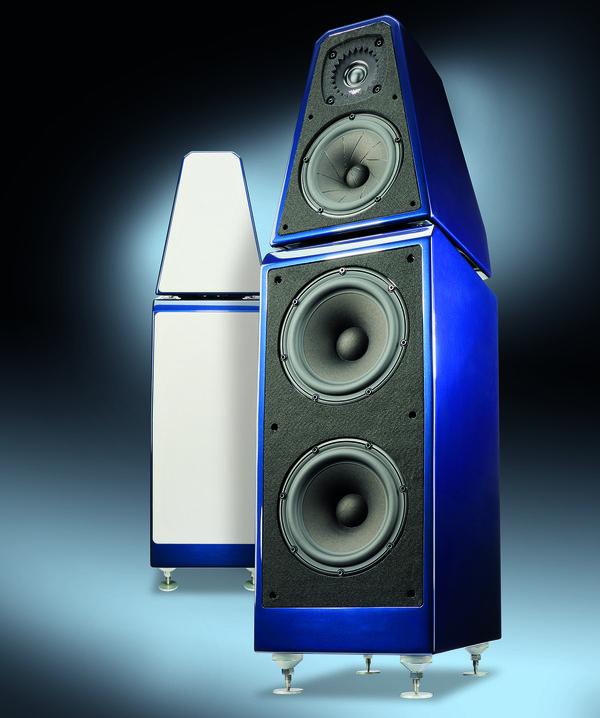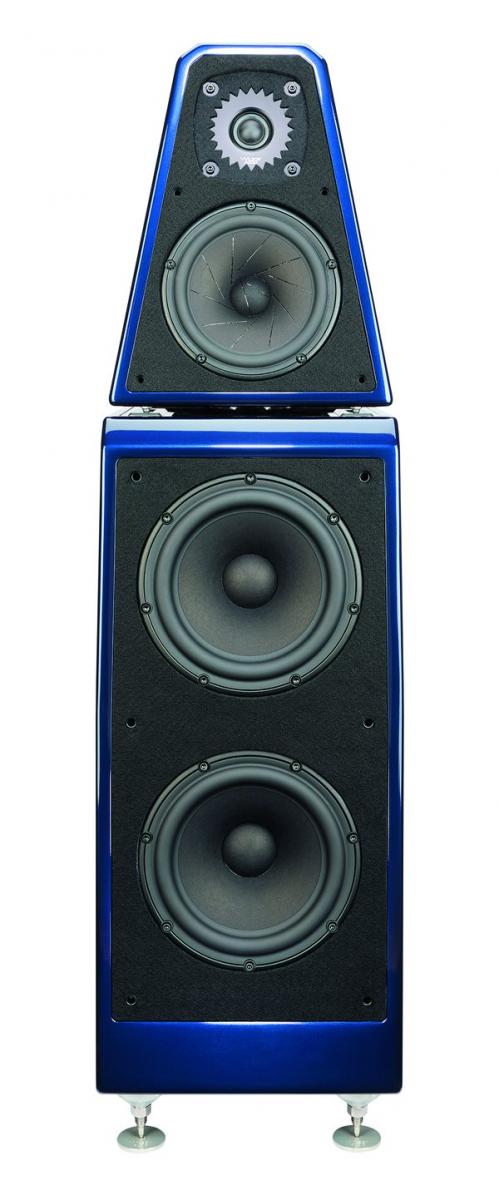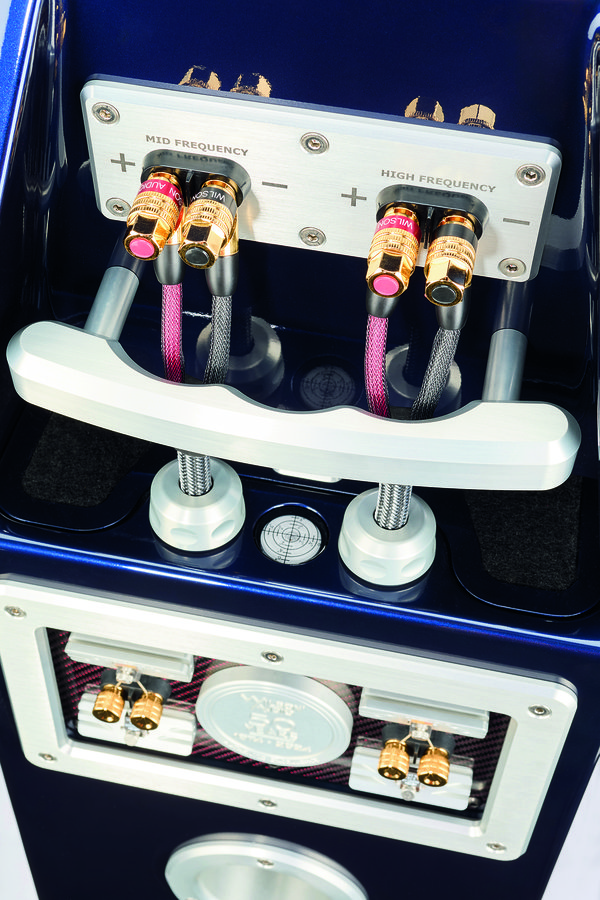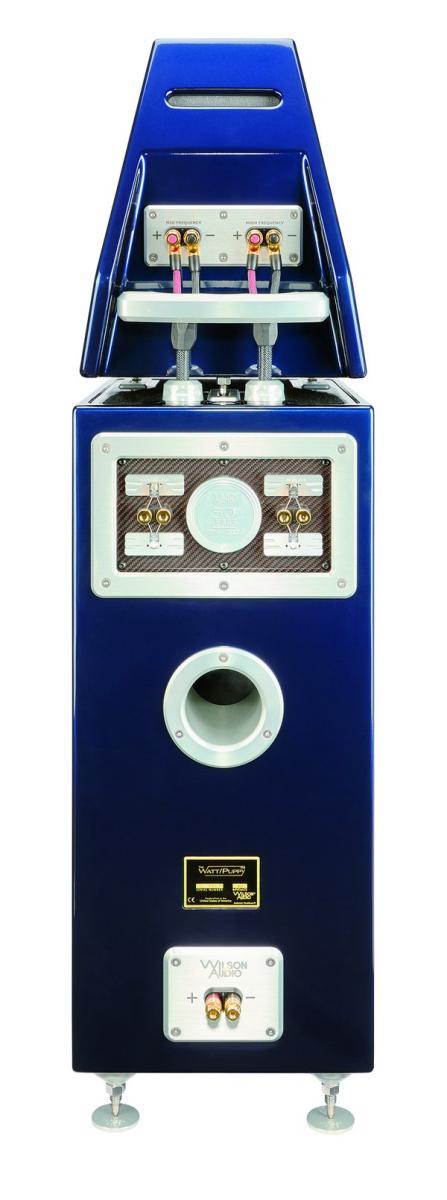Wilson Audio The WATT/Puppy

 To celebrate a half century of the Wilson Audio family brand, it returns to its founding and arguably most iconic loudspeaker - The WATT, with bass support from the Puppy!
To celebrate a half century of the Wilson Audio family brand, it returns to its founding and arguably most iconic loudspeaker - The WATT, with bass support from the Puppy!
Whether it be cars or guitars, anniversaries benefit small manufacturers because they present authentic marketing opportunities. One of these is a reason to release a special model while another is to declare one's provenance. You can't fake longevity, so the real value is that anniversaries cannot be 'made up' as they arrive only with the passage of time. And while it's hard to believe, 2024 marks the first half-century of Utah-based Wilson Audio Specialties, and the designated birthday cake is The WATT/Puppy you see here.
Note the use of 'The' in the model name, not WATT/Puppy nor System 9 if this were to pick up where the series left off [see 'A Puppy's Tale', right]. It certainly merits the 'The' as in 'The Connaught' or 'La Ferrari' as it's more emphatic than a mere number. Yet neither is it a marketing conceit because The WATT/Puppy (from £41,998 depending on paint finish) is the beneficiary of all that has happened at Wilson in the past 13 years. It's a career marker and a returning legend.

The WATT’s 25mm doped-silk dome
tweeter, with rear wave attenuator, was
unveiled in the Alexx V and is married here
to Wilson’s 178mm ‘QuadraMag’ pulp/
composite mid driver and dual 203mm
stiffened-pulp, reflex-loaded woofers
Get The Look
An analogy is apt here. I recall once being told that if you took apart the first Porsche 911 - turning 60 this month - and the latest iteration, there wouldn't be one interchangeable component, not even the badge. I cite this because the 25-year-long saga of WATT/Puppy, from 1986 to 2011, isn't dissimilar save for a hiatus ending with this model. From the very first WATT to the WATT/Puppy System 8 there was a constant evolution in materials, components, crossover design and aesthetics.
With its return in 2024, the analogy with Porsche continues visually - if you stand The WATT/Puppy next to the original [see inset picture, right], you'll immediately recognise it as a true descendant. Although differing dimensionally from the original, The WATT/Puppy shares the same look. In reincarnating the WATT/Puppy to 'The WATT/Puppy', and to maintain the historical purity, Wilson even resisted adding 'flying buttress' handles as found on the sides of the Sasha V - those open wings that bracket the upper cabinet. Except for this speaker, skeletal frames now define a signature detail for all of Wilson's multiple enclosure models. Without them, the look will trigger nostalgic warmth in older audiophiles.
In standard form, The WATT/Puppy can be dressed in one of five colours, with a choice of silver or black fittings. For an extra fee, another 17 luxurious hues are available. Ultimately there's the premium 'Pearl' selection of 11 colours for still more outlay. While only the customer knows how important looks are relative to price, the 'Pearl' colours bring the cost of The WATT/Puppy a bit too close to that of the Sasha V in its standard form.

The permutations of Wilson’s
‘Standard’, ‘Upgrade’ and ‘Premium
Pearl’ colours with its six grille fabrics and
black/silver hardware options make this a
highly customisable design! It’s seen here in a
Bentley Blue finish with Parchment Grey grille
Tune In Or Trade-Up?
This raises an important point. The WATT/Puppy fits between the SabrinaX and the Sasha V, clearly bettering the former, as it should. The £17,000 difference between The WATT/Puppy and the Sasha V, though, is a sharp taste of the Law of Diminishing Returns.
It's because The WATT/Puppy is so truly proficient at recreating soundstage, detail, textures and air that, to justify the move up to the Sasha V requires a set of conditions beyond access to a bigger bank account. These would include a larger room, the most revealing sources and amplifiers, and a set of ears so gilded they can discern the actual make of strings on Buddy Holly's Fender Stratocaster. And the plectrum.

Cables from the main crossover pass up through the top of the Puppy, behind the WATT’s
alloy rear handle, and terminated in gold-plated 4mm/spade posts. The WATT’s height is adjustable
at the rear, pivoting on two fixed front spikes for fine adjustment of overall time alignment
Cabinet Shuffle
Yes, The WATT/Puppy is that good, even though the Sasha V necessarily has a tad more low frequency extension and finer upper module adjustments for tighter time alignment. The siblings therefore also present a lesson in loudspeaker design because the drive units in The WATT/Puppy are identical to those found in the Sasha V [see boxout, below]. It seems, then, that the raison d'être for the Sasha V's added premium, post-The WATT/Puppy, is the deployment of larger cabinetry.
At this point, you can imagine how this is going to be a tough review to undertake, even though my own experience includes at least five of the WATT/Puppy incarnations, including the 'Beard/Gibraltar' and two of the Sashas. What makes this so challenging is that we're dealing as much with comparing cabinet volume as with anything else.
Daryl Wilson describes the path which, in reductio, he placed the same drivers in The WATT/Puppy's reduced enclosure. The progress in available materials since the WATT/Puppy System 8 is as crucial to the evolution as the changes in drive units. It's all about trickle-down technology: S-Material, as used for The WATT's baffle, was first introduced and developed for the Sasha W/P, which arrived just as the System 8 was retired.
'It was the same with V-Material', says Daryl, 'which was developed for the XVX and was not available when the System 8 was being created. Even X-Material, used for all internal bracing and external enclosure material, has been refined since we last worked on a WATT/Puppy platform. The combination of materials we use for The WATT/Puppy yields quieter, more damped and controlled, sonically rich enclosures'.
Every detail had benefitted from some change, whether it was the incorporation of the 'Acoustic Diode' spiking system or the completely reimagined crossover model that's a far cry from what was available in 2011. Even the slope of the top module's baffle has changed, not least because the new speaker allows angling of the head unit. Like its predecessors, setup involves toe-in, but also microscopically adjusting the top module's angle, which was not part of the earlier models' installation regime. One final nicety is that the rod handle on the rear of the WATT, which David Wilson installed on the original speaker to help him transport it to recording sessions, has been re-styled so that it can be grasped securely and comfortably at any angle.

Rear view shows lower-to-upper
cabinet connections, rear-firing port,
midrange vent and access to ‘protection’
resistors. The crossover is in the main
cabinet and does not support bi-wiring
True Grip
Before taking delivery of The WATT/Puppy, I'd talked briefly to Daryl about his impression not of The WATT/Puppy side-by-side with the Sasha V, but what it was like compared to the preceding WATT/Puppy System 8. He maintained that The WATT/Puppy outperformed the System 8 in every area, from low frequency extension and slam to soundstage depth and width. He also spoke of greater midrange 'bloom'. Of course, Daryl is proud of his new baby, but could this new speaker system truly deliver on all of his promises?
I sat down to hear Willy DeVille's 'Assassin Of Love' [Polydor 887 312-2/POCD904 CD single] in anticipation of some of the most impressive bass to the west of Kodo drumming. It had served me in good stead through all those generations of WATT/Puppys. The heir to the line shook me with bottom octaves so solid, so controlled and so powerful that it almost sounded like the CD had been remastered.
Octave Overload
Of course, scale and bass aren't the only criteria for determining a speaker's capabilities. For some, they're not even among the four of five most important, eg, I'm a midband and soundstage obsessive. But the weight, the presence and lastly the vocals, notable for DeVille's gruff textures, immediately undermined what I recalled of the early versions. The WATT/Puppy's retrieval of bottom octave information was at a level I expected of speakers at least 50% larger - disconcerting enough. What I did not expect was focus I thought was the province of small monitors.
It then occurred to me that what I was listening to was an advanced interpretation of a small monitor (as it was back in the 1980s and for which it remains the template), if augmented with a woofer system that did not compromise the midrange and treble. Blind Faith's staggering, lone, self-titled LP [Atco SD33-304B], released in 1969, would do more to reveal the capabilities of the top module than the woofer enclosure, and so it proved.
Autoharp and violin on 'Sea Of Joy', Steve Winwood's distinctive, nasal vocals, Ginger Baker's odd, trashy cymbals - the clarity and freedom of coloration proved to be a testimony of sorts, a reminder of why this speaker exists, for here was a studio monitor with levels of detail Wilson Sr required of the first WATT of 1984. The transparency via vinyl approached open-reel tape, but with a key improvement that can only be attributed to Wilson Jr: no hyper-detail to render the loudspeaker clinical-sounding.
Serenely Silky
It's a devilish balance, that of retrieving all the low-level detail, extreme treble clarity, brisk transient attack and smooth decay, while avoiding aggression or any potential for listener fatigue. I always employed valve amps throughout my 35-plus years as a Wilson user, but was always aware that the speakers could tip into the 'hot treble' zone, especially on the end of solid-state amps. Not so in the Daryl Wilson era, which meant that D'Agostino and Constellation amplifiers sounded almost as cuddly as my tweaked Radfords.
To test this further, I dug out a classic example of what went wrong in studios in the mid-1970s-to-1980s, when everything seemed to have treble turned up to 11. Arguably the greatest country vocalist of that period, Juice Newton has a set of pipes to rank with Mesdames Ronstadt, Cline, and Wynette, and nothing comes close to the drama of 'Break It To Me Gently' from Greatest Hits (And More) [Capitol CDP 7 46489 2 CD]. Equally, its upper frequencies can rival the annoyance of a smoke alarm.
Whatever sorcery has served Daryl Wilson so well, it's evident here in that it changed the occasionally glassy to the serenely silky. The transparency and detail of The WATT/Puppy had already done justice to Willy DeVille's vocals, which are diametrically opposed to Juice's, so the speaker rightly favoured neither. In the way it treated such divergent voices with both equanimity and authority, the 'studio monitor' status of the original WATT was retained even in its alter ego as a high-end audiophile speaker. I cannot name many studio monitors which enter civilian life with such poise.
Tool You Can Trust
This is the reason why makers of both studio and domestic monitors, from PMC to Tannoy to JBL, run two separate ranges. Now, I am not suggesting for a moment that pro recording studios should invest in The WATT/Puppy system. Rather, I am saying that they would find the speaker as useful an analytical tool as I rate it for end-user pleasure.
Harping On
Despite the way The WATT/Puppy dealt with both the delicate and the majestic, it was the latter that proved the most enticing. The speaker was proving to be the opposite of the diminutive LS3/5A, for example, to which I turn for savouring vocals. Thus I was driven to playing the whole of Led Zeppelin II [Atlantic SD8236], with which John Bonham's juggernaut drumming came ascloseasthis to the Sasha V. The slam, the dryness of the bass drum, the sizzle of the cymbals were reproduced with such command that I was finding it difficult to imagine more.
What sold me, however, was a raw performance from a long-forgotten various artists LP sampler from 1973, Let It Rock [Atlantic K40455]. After a blistering 'Back In The USA' by MC5, all scorching guitars with greater speed than The Ramones could muster, I sat back to savour Magic Dick's harmonica lead on J. Geils Band's 'Pack Fair And Square'. Arguably the greatest harp solo in history, it soars while testing clarity and transient crispness. It was, to put it succinctly, as in-the-room as I have ever heard in 50-plus years of loving it.
Grand Master
Ultimately, there's a parallel here I simply have to declare. It is no secret that Daryl Wilson has taken everything that he learned at the feet of the maestro, his father David A Wilson, and used this knowledge not solely as a legacy but as a foundation for his own innate abilities. Just as every WATT/Puppy improved on its predecessor, so has Daryl moved beyond his father's achievements to become one of the pre-eminent speaker designers of the 21st century. The evidence? The WATT/Puppy is a masterpiece.
Hi-Fi News Verdict
Even bith but a few dozen hours burn-in, The WATT/Puppy changed everything. It delivered in a reduced package 95% of the Sasha V's brilliance, a fraction barely noticeable unless the room size and peripherals can exploit it. This speaker defies the eye. What you hear surely cannot come from so compact a system? It is Wilson's new sweet spot. So it is with genuine awe I state: this is my final reference.
Sound Quality: 93%

















































